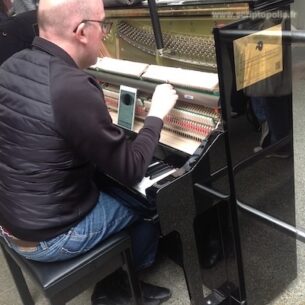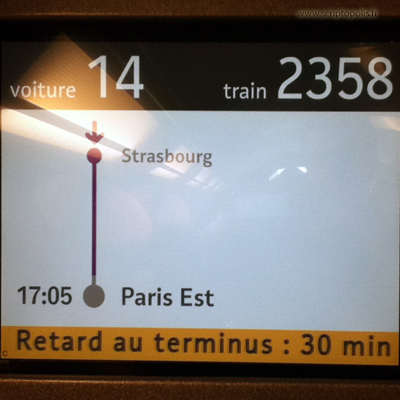Travelling light
The tale of the failing train has become a very stabilized narrative figure : passengers left to themselves for hours, no station agent present to answer them, locked in their steel vehicle unless they decide to get out and walk on the rails. Confinement, heat or cold, lack of water or food, clogged toilets are all annoyances conducting to regular repayments or demands for reform.
In an interconnected world where speed transportation and reliability of schedules are technological promises hard to keep, delay or, worse, uncertainty about it, appear as a mass disaster. To cope, the railway company had long provided a tool for “real-time” traffic monitoring, but its users have to be connected. Taking advantage of a new generation of high-speed trains, the company has adapted a device very familiar to passengers of another means of transport: cabin screens.
Showing progression along the route, past and future stops, the number of the car and train, and alternatively, velocity and time, these screens also take into account the unexpected by informing on the coming delay and its causes. Instead of skipper announcements crackled by speakers, here is a live news channel. Like many transformations in writings, deaf people will appreciate it, while illiterate and blind people will no doubt suffer. One question remains: who does update information and what fragile relays does it rely on to reach travelers?







